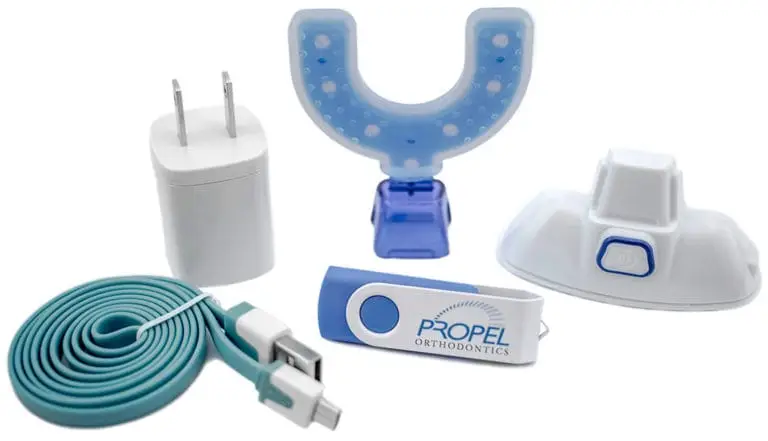
Accelerated Invisalign – Propel’s VPro5
Diamond Braces is happy to offer its patients VPro5 by Propel Invisalign, the latest tool that helps to straighten your teeth quicker.
Invisalign clear aligners offer many potential perks that could appeal to patients over traditional metal braces or ceramic braces . Unlike other orthodontic appliances, Invisalign clear aligners can be:
Invisalign clear aligners offer benefits for oral health but are more expensive than traditional braces. Typically, they cost a few hundred dollars extra. However, financial support is available. In New York and New Jersey, specific insurance plans, along with FSA and HSA savings accounts, can help manage these costs.
When exploring types of braces, consider invisalign treatment insurance coverage ny nj. This information is crucial for budgeting. Always consult with a dentist or orthodontist. They can guide you on the best plans that offer coverage for Invisalign treatment in NY and NJ.
But how exactly do you find out how much your insurance plan will cover Invisalign clear aligners, or whether your plan will cover any costs at all? Hopefully, this coverage guide will help you gain more insight into whether you can afford Invisalign treatment under your state-sponsored or private network insurance plan .

It’s a totally valid option to pay for Invisalign treatment without insurance coverage, entirely out of pocket. That said, it’s probably not the option most patients will prefer. On average, Invisalign treatment costs between $2,400 to $8,000 without coverage . Your provider may offer flexible, monthly payment plans to make that burden a little more manageable, but that will still not be most patient’s desired option.
Given that many Americans struggle to pay an unexpected $400+ expense (per the Federal Reserve ), Invisalign treatment, while not entirely covered, can still receive partial financial support in New York and New Jersey. The cost of Invisalign without insurance in NY and NJ varies, but several insurance plans may help reduce expenses.
This guide focuses on well-known insurance providers and how they help pay for Invisalign. Each company has different rules for helping with the cost. People thinking about Invisalign need to know these options. The guide is easy to read and sticks to the point.
In the first part, we talk about subsidiaries and affiliate companies of these insurers. They might have unique policies for Invisalign. In the second part, we look at dental inc humana employers and their Invisalign coverage. We also discuss how vision plans are insured by these companies.
Finally, we talk about the benefits of straightening your teeth with Invisalign. This guide aims for a Flesch reading-ease score of 64, making it simple yet informative.

Most Humana dental plans for invisalign ny nj, cover a part of orthodontic care for both adults and children. This coverage often includes discounts on Invisalign clear aligners.
Humana sets itself apart from many insurers. They have a specific rule: treatments that have already started are not covered. This is unless you've enrolled in a Humana dental plan right before starting the treatment.
For residents insured by Humana, it's important to understand this policy. The Humana health benefit plan has unique terms. If you're with the Humanadental Insurance Company, Humana, remember this rule about pre-started treatments.
It's important to talk with Humana before you start your first consultation. This ensures that you are covered and can receive discounts.
Humana offers various health benefit plans. These plans are part of the Humana Insurance Company Humanadental.
Humanadental is known for providing quality dental care. The Humana Employers Health Plan is another option. It offers benefits for both employers and employees. Always check your coverage with Humana to understand your benefits.

Orthodontics are a listed benefit under Aflac Dental’s coverage, as the “Orthodontic Benefit Rider” option. To reap this benefit, the individual must have completed a 24-month waiting period. Then, the patient will pay $500 for initial orthodontic treatment. Following the initial appointment, Aflac will then pay $50 for each continued treatment.
As “limited treatment” is listed under Aflac’s official benefit form , and Invisalign aligners treat limited sets of teeth at a time, you should be able to receive at least some coverage for Invisalign clear aligners. However, these benefits are not payable to patients who began treatment before the waiting period ended. Coverage may also vary depending on locale, age, or the location where you seek treatment. Be sure to review your case with an Aflac provider before making any big commitments.

MetLife’s dental coverage may be able to cover Invisalign clear aligners, provided that a licensed dental professional is administering the care. MetLife provides a diverse array of dental plans, including those tailored for veterans and federal employees. Notably, their dental PPO plans stand out for offering extensive coverage options and a vast selection of dental providers.
If you're in New York or New Jersey, MetLife also offers an HMO plan. This plan requires you to choose a specific dentist at the time of enrollment. It's important to note that HMO plans typically do not include "metlife invisalign coverage options ny nj", which means they aren't ideal for those seeking affordable clear aligners. Therefore, if Invisalign is a priority for you, the better choice would be one of MetLife's PPO plans.
When selecting a dental plan, it's vital to understand the product or service contract you're agreeing to. The dental PPO plans from MetLife are especially beneficial for their flexibility and the variety of choices they provide. Residents in Louisiana might consider the Benefit Plan of Louisiana, while those insured by Humana should compare their options carefully. Remember, consulting directly with a provider is the best way to understand and choose a plan that suits your needs.